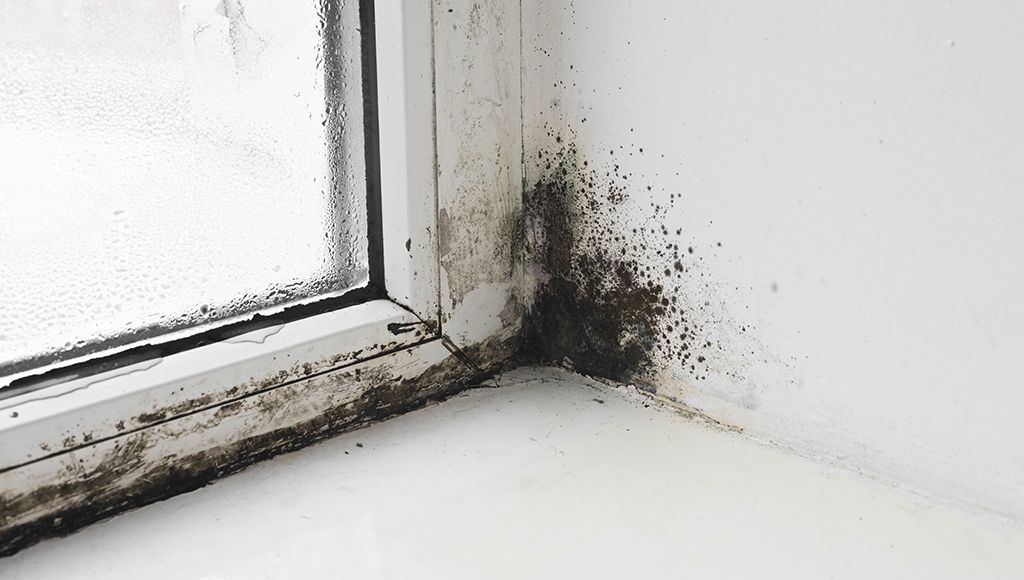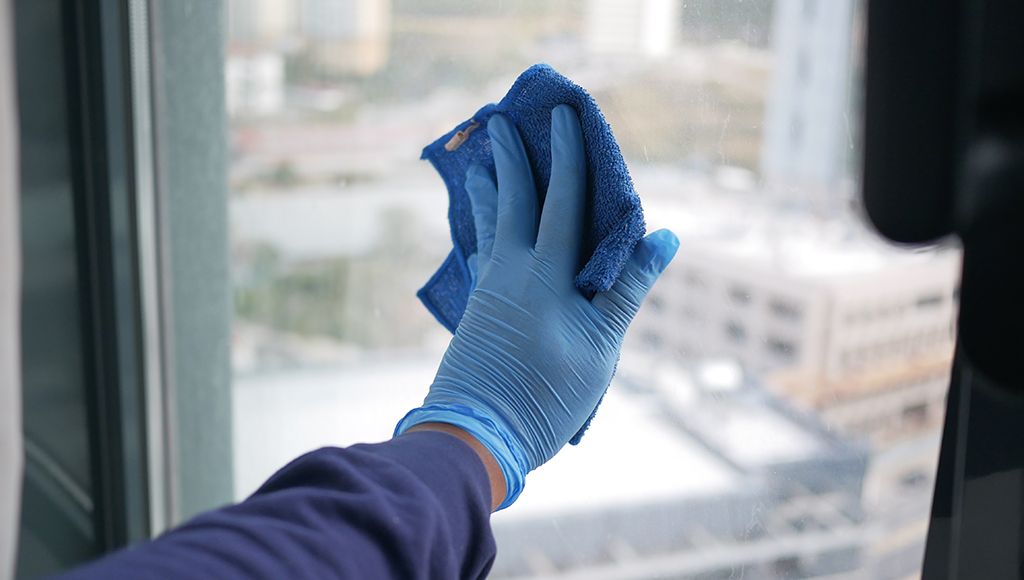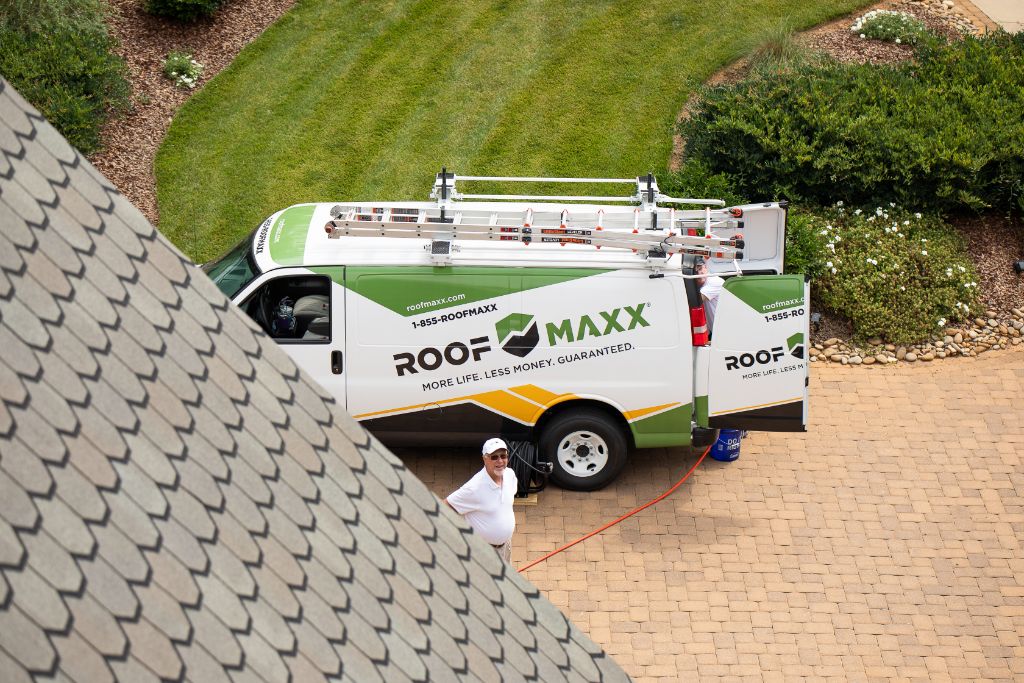For about 47% of homeowners in the US, mold on windows and other surfaces isn’t a new problem—it’s something they’ve seen before. When it crops up in bathrooms or kitchens or along your windows, it often seems minor at first, but it’s a warning sign that you have too much moisture in your home.
Treating mold promptly is important because it can look unsightly, make you seriously sick, and even destroy your windows over time. Below, you’ll find everything you need to know to treat it and prevent it from taking hold (and no, bleach isn’t always the answer).
Roof leaks along your flashing can eventually infiltrate your walls, creating a breeding ground for mold. If your asphalt shingles are old, they will lose the ability to channel water away from vulnerable areas. Roof Maxx rejuvenates them so you have maximum protection. Learn how it works here.

First, let’s talk about what mold really is: a group of fungi that thrive in damp, poorly ventilated spaces. Scientists have discovered over 100,000 types in total, but you’ll typically only find 10 or 20 specific types in your home. Some are relatively harmless, while others—like black mold—can be very dangerous.
Molds typically develop as black, green, or gray spots along window sills, frames, and seams where the frame meets the glass. A musty smell near windows may also point to hidden growth behind surfaces.
Other signs include:
These symptoms aren’t always caused by the mold itself, but signal a moisture problem instead. And where there’s excess moisture, mold is rarely far behind.
Condensation from temperature differences or leaks around the window frame create an ideal environment for mold growth. When you shower, bathe, or wash dishes, moisture evaporates into the air, which is why bathrooms and kitchens are one of the most common rooms for mold to grow in.
Improperly sealed or fitted windows can also contribute to the problem, either because they allow the damp in or because they develop leaks. Fixing problems like these and ensuring proper ventilation can help you prevent mold from coming back after you remove it.

You can’t always identify whether mold is dangerous by appearance alone. That’s why it’s best to err on the side of caution and take steps to protect yourself from exposure before you start.
Mold spores travel on the air and stick to surfaces, so you always want to take steps to prevent inhaling it or making physical contact with it in any way. To stay safe:
An N95 respirator mask will provide the best protection from spores. Regular hospital-style face masks, bandannas, and other DIY solutions aren’t effective because they let too much air in at the sides.
For best results, choose a cleaning product with a proven ability to kill mold. Stay away from bleach unless you have no other option—it’s corrosive, won’t work on porous surfaces, and leaves behind dead spores that can still trigger allergies.
Try these alternatives instead:
For extreme cases (e.g., mold in walls or soft surfaces), consult a mold remediation expert before you start. It may not be safe to try and clean it on your own.


Addressing the root cause of moisture is the only way to stop it from recurring, but this isn’t always an easy task. If you suspect a roof leak or more serious problem, like mold in your walls, it’s best to call in a professional remediation team. Otherwise, follow the next few steps.
To keep your windows in top shape, follow these best practices:
Check carefully for misalignment, leaks around the frame, or an incomplete seal when each window is shut. All of these can contribute to mold growth, so if you suspect a problem, have it looked at right away.
Roof leaks can lead to excess moisture, which can eventually infiltrate your walls and even leak down around entry points, including your windows. This is a major contributor to mold growth. Check carefully along areas where surfaces and materials meet, like the edges of your roof, to spot minor leaks.
Roof Maxx helps extend the life of your aging asphalt shingles by making them flexible enough to expand and contract with the weather again. This helps direct water into your gutters and downspouts, which can indirectly lower your risk for leaks and mold. The oils in Roof Maxx also act as a natural fungicide, which prevents mold and algae from accumulating on your roof or shingles.

If mold develops on your windows, it’s important to address it promptly. Following the steps in this guide will help you safely remove it from your windows and other surfaces, but resolving the root cause of high humidity is the only way to effectively prevent it from coming back.
For maximum protection, remember that your roofing system is your home’s first line of defense against moisture and the elements. Roof Maxx contains a natural fungicide that can help prevent moss and algae from spreading to your shingles from nearby structures or trees. Connect with a dealer in your area to get a free quote.
With our five-year, transferable warranty, you’ll enjoy the peace of mind that your roof and entire home are protected.